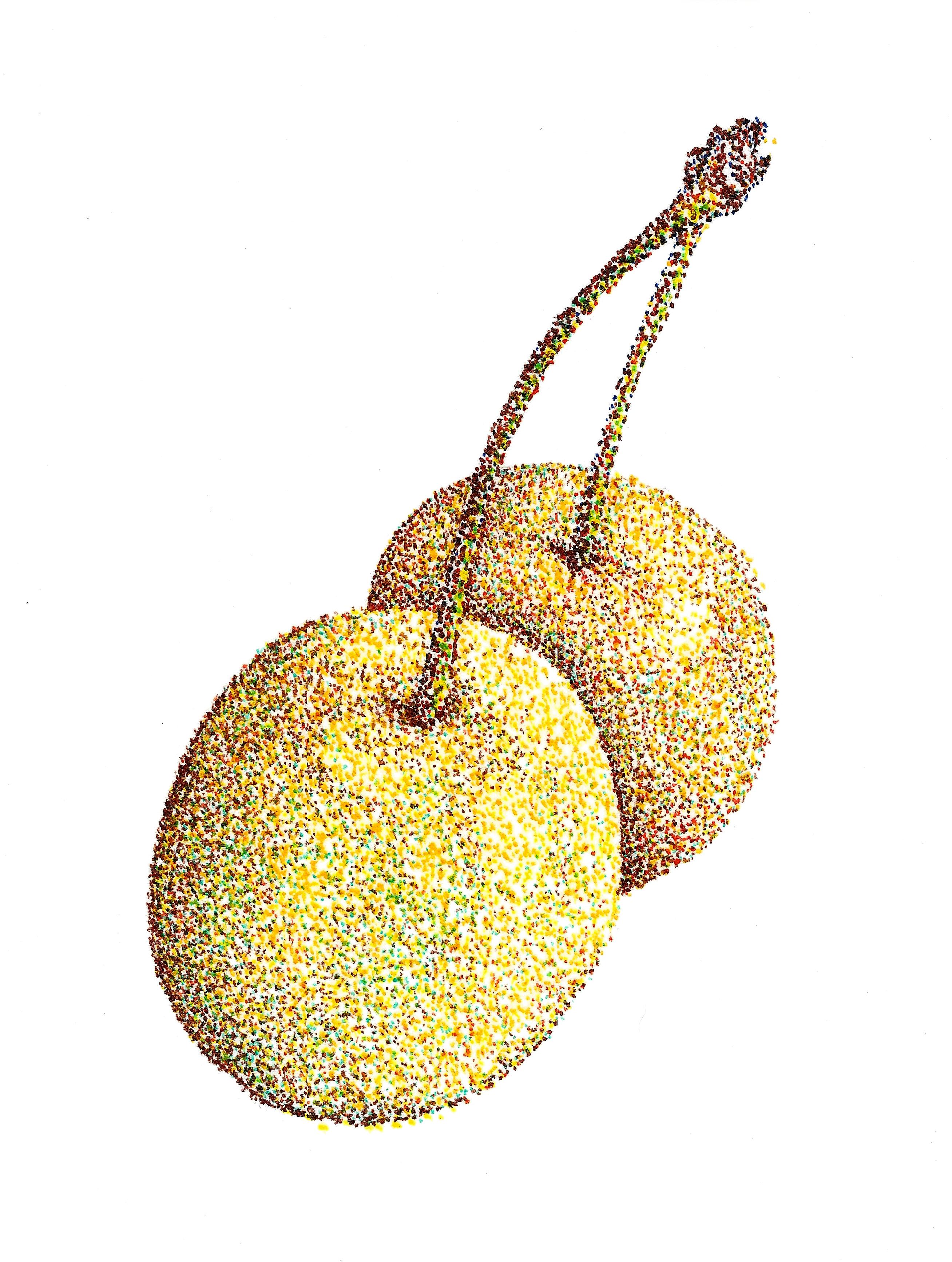

Currently unavailable: I was fortunate to find a collector who was very good at finding rare fruit plants in areas where few people go. Such is the case for wild pears. Many of the subspecies of which the common pear that we eat is from are found in these remote mountainous regions of France. Like the crabapple, wild pears have a rather tannic aftertaste and are not possible to eat fresh. For this reason they can only be used for processing. It is unknown how these can be used for edible consumption other than jelly. They have a very high astringency. The fruit ripens early in August and September. The plants are incredibly productive. The deer and other animals at our farm find it delicious and I have to quickly shake the trees just before ripening to get the fruit.
Fully immune to fire blight and all insects, my planting grows in what is best described as a rock strewn field on a steep slope with no topsoil to speak of. The fruit production began in earnest once the plants reached about 8 ft. tall. The thick spurs and glossy foliage make it a perfect pear for extreme drought and heat. It could be used as both a rootstock pear or possibly a pear for its edible nature once processing can tame the strong flavors. Plants are dwarfish in stature and some are almost fastigiate in tree structure.
To germinate the seeds: Seeds require a 90-120 day cold dormancy 34-38F. Put seeds in a lightly moist Canadian peatmoss. Some seeds will sprout after 60 days in the fridge. Pluck these out and plant immediately. Seeds can be fall planted by lightly covering the seeds and watered in. Seeds will sprout in the spring and are remarkably frost resistance.
| Plant Specs |
| Genus & Species |
Pyrus communis var. balansae and other subspecies of wild forms |
| Seed Source |
Michigan,France |
| Height (ft) |
30-50 |
| Width (ft) |
10-30 |
| Pollination Requirements |
Self fertile. Will cross with other pears too. |
| Soil |
Rock, sand, loam and clay. Very adaptable. |
| Climate |
Zones 3-9 |
| Ease of Cultivation |
This is one of the most durable species pears we grow. Slow growing at first but once established really kicks out the fruit. Balansae pear is the most wild form of all wild pears and is not likely in cultivation other than our farm and arboretum.
|

